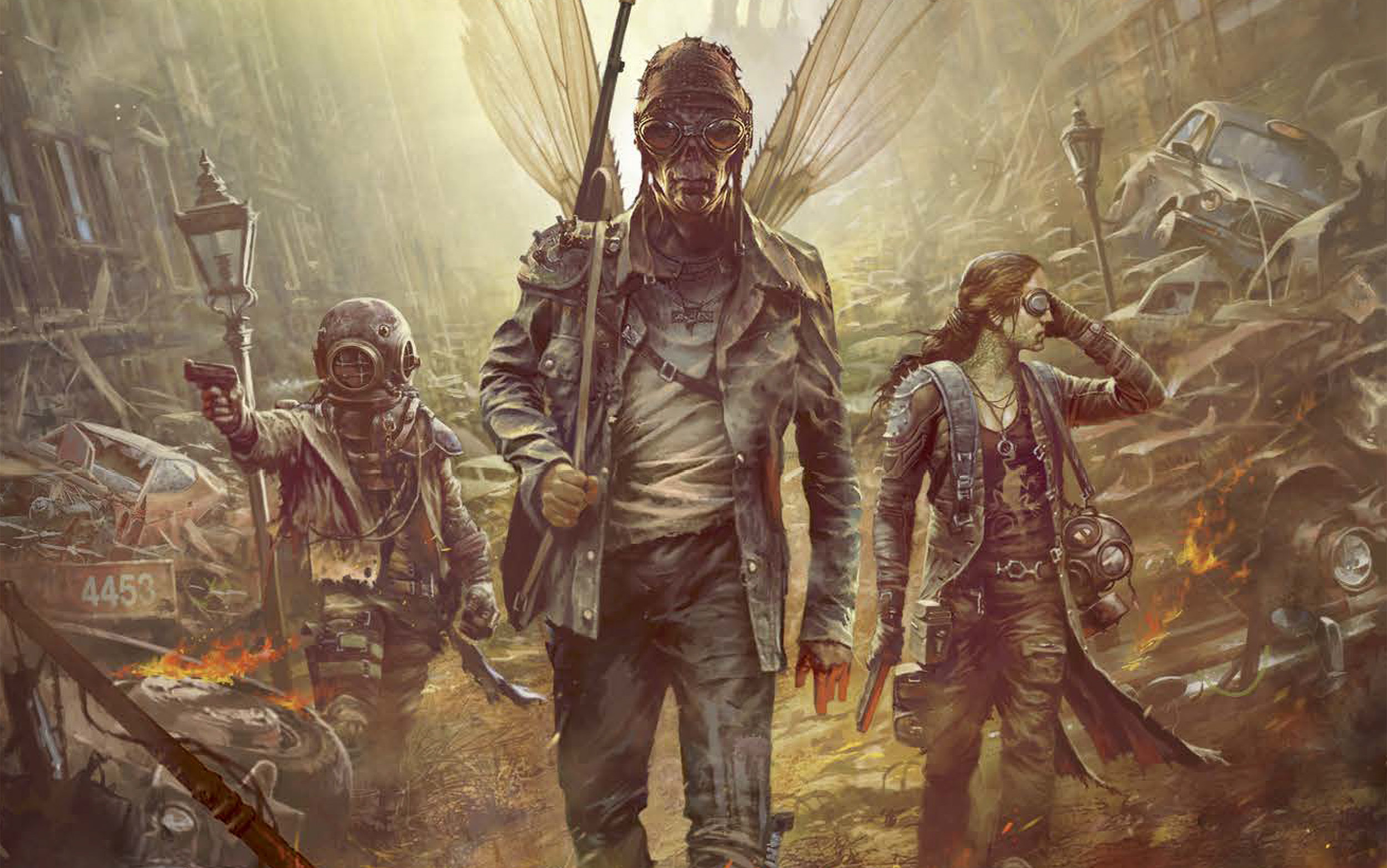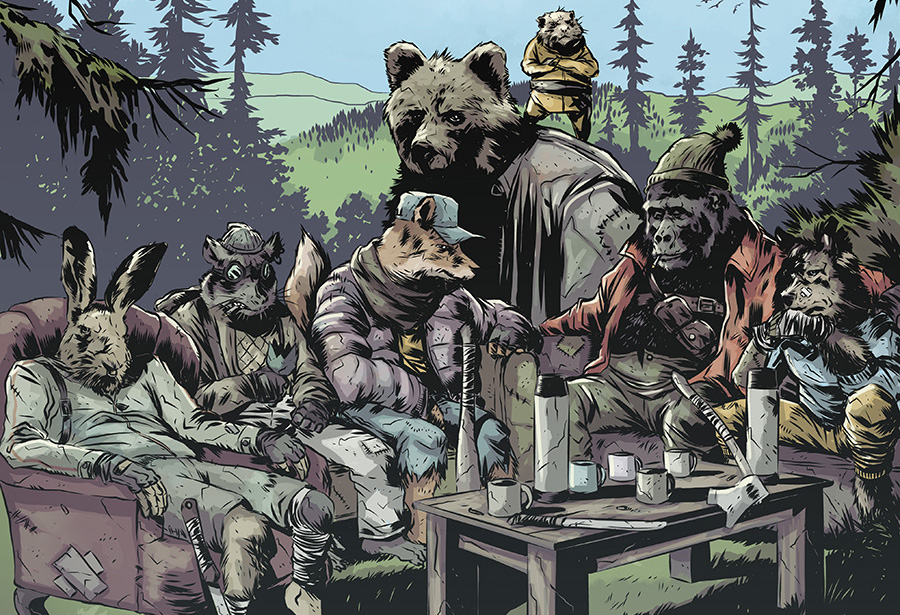The tabletop lore behind Mutant Year Zero's gun-toting animals and psionic doomsday cultists
The new XCOM-like tactical game has tabletop roots inspired by Gary Gygax, but throws in plenty of its own ideas.

A pig, a duck, and a mutant walk into a bar. Pripp’s Bar, to be precise, located on The Ark, the last safe haven amid the crumbling ruins of a world ravaged by global nuclear warfare and a deadly pandemic. That's a scene that'll play out a few hours into Mutant Year Zero: Road to Eden, but it just as likely could've happened more than 30 years ago. The new game translates the Swedish tabletop RPG Mutant, originally published in 1984, into an XCOM-like tactical strategy game.
Much of the actual RPG gameplay from the tabletop game, most recently published as Mutant: Year Zero in 2014, was changed, streamlined, or abandoned in the genre shift. But the classic 80s post-irradiated setting and lore are much the same. Here's the backstory you might not get if you just straight in, and how the new game differs from its origins.
The Zone and Eden
Mutant Year Zero: Road to Eden is heavily based on the 2014 Mutant Year Zero RPG, which is actually a prequel to the original Mutant from 1984. That game took place in the 2560s, when the world had rebuilt after its apocalypse. Where did the Swedish creators draw inspiration from? Another tabletop RPG called Gamma World from the late 70s, which D&D creator Gary Gygax actually wrote adventures for. Also, the DC comic Kamanda, created by Jack Kirby.
Year Zero is set around the year 2270, approximately 200 years after everything went to hell, but before much of anything has been rebuilt. (Coincidentally, post-apocalyptic RPG Fallout 3 is set in the year 2277, 200 years after a nuclear war).
The PC game begins with the Ark’s crucial engineer missing, and several threats looming on the horizon. The most common are the zone-ghouls, barbaric nomads who wear full body suits and gas masks and wield primitive weapons. Zone-ghouls are the most common enemy in the wasteland though usually only found at night, as they take damage from sunlight.
One of the biggest threats from the tabletop RPG that appears in the game is the Nova Cult, a group of psionic mutants who have converted an ancient underground missile silo into a holy sanctuary. It’s a classic doomsday cult, and players must carefully deal with a deranged holy leader who has her finger on the launch button.

In Mutant: Year Zero all roads lead to Eden, a mythical location that’s drawn directly from the core rulebook. Many of the RPG’s locations are designed to be ambiguous and easily organized into one square mile zones. Those zones are filled with various dangers and treasures amid ruined cities and countrysides for the players to explore. Eden is one of the few set locations that’s intricately detailed, not unlike a dungeon crawl in Dungeons & Dragons.
Keep up to date with the most important stories and the best deals, as picked by the PC Gamer team.
Without spoiling too much, the tabletop's Eden holds secrets for the player characters while introducing powerful new threats and a worthy antagonist in Doctor Retzius.
Getting to Eden and discovering its truths represents an overarching metaplot for the RPG, and a fun long-term goal for a party to work towards, though a campaign certainly doesn’t have to end there.

Pen-and-paper classes and mutants
In the RPG, players can choose between eight roles, such as the tech-savvy gearhead, the smooth-talking fixer, or the, uh, resilient slave. Player characters put point into skills, acquire role-specific talents, and evolve special mutations.
In Road to Eden, all your party members are stalkers, a combat-focused role whose primary job is to explore the dangerous wasteland and hunt down food and artifacts. Mutations play a key role in making each stalker unique, creating an effective skill tree as you level up. Most are lifted directly from the rule book, including insect wings, frog legs, and puppeteer.
Be thankful: In the tabletop RPG these mutations are randomly conferred from a large list, though all of them add fun new abilities and features that can be used both in and out of combat.
Mutated anthropomorphic animals like Bormin and Dux help make the post-apocalyptic world stand apart, as otherwise Mutant is heavily reminiscent of other post-nuclear RPGs such as Fallout and Wasteland. Interestingly, mutated animal player characters aren’t a feature in the core rulebook, but were later introduced in an expansion, Mutant: Genlab Alpha. Considering the age of the pen-and-paper RPG, it's quite a new addition: the expansion was just released in 2016.

Nine animal tribes were added in Mutant Genlab Alpha as new player races, including rats, bears, and even badgers, though curiously ducks and pigs are nowhere to be found. The animals have a different origin and a different starting area than the mutants of the Ark or the zone-ghouls prowling out in the Zone, which is why Bormin and Dux haven’t found anyone who looks like they do whenever they venture out of the Ark.
You'll find "artifacts" out in the zone, which are mostly everyday objects from the world of “the Ancients” before the fall, and an easy way for the apocalyptic world to inject some much-needed humor, as our heroes have no clue that a boombox is not, in fact, an explosive device. In the tabletop RPG, found artifacts are rare and valuable, ranging from a chainsaw to an air mattress. They work like magic items in Dungeons & Dragons, often granting skill bonuses and other special effects, in addition to contributing towards new projects and facilities in the Ark.
Road to Eden translates these projects into a list of upgrades and discounts at a shop in the Ark, after finding enough artifacts. It's a specific example of how, broadly, the tactics game adapts and simplifies components from the RPG. Mutant Year Zero: Road to Eden scratches the surface of the RPG while incorporating many of its biggest themes, locations, and factions.

